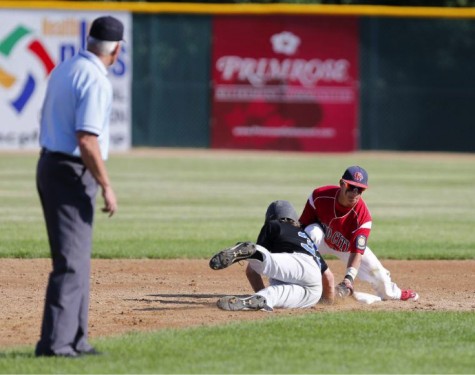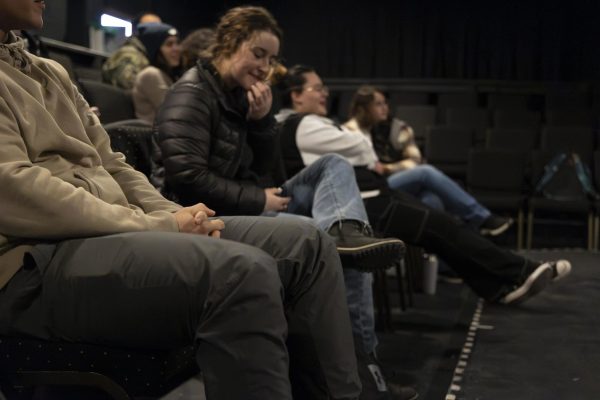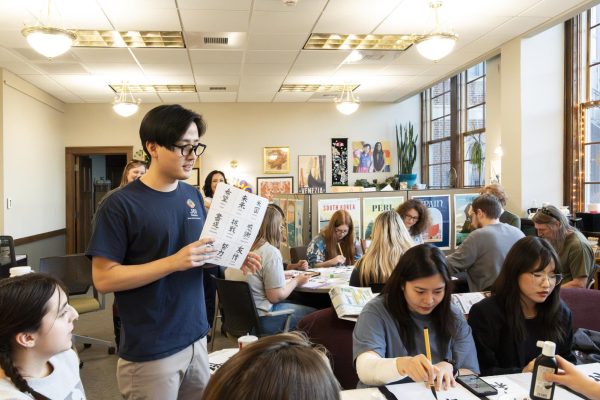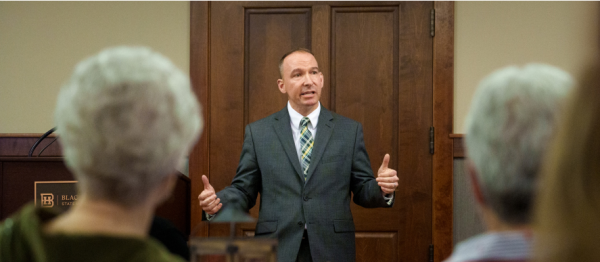Critical Teacher Shortage in South Dakota
In a few weeks more than 400 students will graduate from Black Hills State — and as a part largest teachereducation programin the state of South Dakota — many of those grads will be pursuing jobs in education. The job search will begin, and these talented new teachers will eventually make a choice about where to begin their careers.
Unfortunately, many of them won’t choose South Dakota. According to a new study 1/3 of college students who earned a teaching degree from a state institution pursued jobs outside of the state. The result, combined with the retirement of veteran teachers, is a critical teacher shortage.
In a 2014 survey of South Dakota public schools, 20 percent had at least one unfilled teaching positions on the first day of school. There were 31 district superintendents who said they had at least one open position. Now, the numbers are multiplying.
For example, in the Todd County school district there are currently 38 open teaching positions. Thirty-eight is an astronomical number. Traditionally, South Dakota schools have most of their teaching positions filled by the end of May.
The shortage has been coming for some time. Last July, a succession of superintendents testified before the state legislative planning committee and expressed the problem was nearing a critical phase. Monson told committee members in attendance that school districts were “finding it extremely difficult to recruit and retain” teachers. Education advocates and officials asked the legislature to respond to the teacher shortage, citing low pay, relocation, and retirements as deterrents to proper staffing.
“This information is scary,” SASD Executive Director Rob Monson said. “We suspected this to be true, but now the data shows we’re losing potential teachers to other states.We already know we don’t have enough candidates to replace retirees.When you look at over 1,100 educators eligible for retirement, 726 in the teacher pipeline, and 1/3 of those being placed out of state, we are in trouble in preparing our K-12 students here in South Dakota for their future, and the future of the South Dakota workforce.”
There have been several proposals designed to address the shortage, and GOP lawmakers and Gov. Dennis Dugaard’s administration have shot down every one of them.
One group of officials suggested adding aone-cent summer sales taxto be used toward increasing teacher salaries. Most recently, in the last week of February, GOP state senators rejected a proposal to increase teacher salaries in South Dakota by taxing profits of most corporations. However, the Senate State Affairs Committee voted 7-2 along party lines to kill Hunhoff’s plan.
“Without a major effort we’ll never get caught up,” Monson said, adding that a recent studyshowed that a South Dakota teacher’s salary has the same buying power as it did in 1969. Low salaries for teachers were one of the main issues cited for the shrinking teacher pool. Monson noted since the 1999-2000 school year Wyoming raised teacher pay by 24 percent, North Dakota 15 percent and Nebraska seven percent. During that same time period South Dakota decreased salaries by 0.6 percent. South Dakota also ranks last in the nation in average teacher pay.
“We’ve never had to work so hard to recruit people,” Brookings Superintendent Roger DeGroot said.
The legislators on the committee, although pleased with the groups approach, emphasized thatmore research would be needed before moving forward.
“Your model is solid and it’s just a matter of us to keep drilling into the details and talking through the scenarios,” said Rep. Scott Munsterman, R-Brookings, who chairs the committee.
Gov. Daugaard has framed teacher salaries as an issue for local governments and lessened the state’s obligations to solve schools’ hiring problems.
“The state can only impact teacher salaries in an indirect way,” Daugaard said. “To the extent that the state is seen as the sole solution for this, then where are those dollars supposed to come from?”
The state government has been reckless. There is no way they didn’t see this possibility coming. They simply chose to push it down the road and pass the buck.
Children living in the United States have the right to a free public education. And the Constitution requires that all kids be givenequal educational opportunity no matter what their race, ethnic background, religion, or sex, or whether they are rich or poor, citizen or non-citizen. If our students are lacking competent, well-trained professionals in South Dakota’s classrooms, we are denying them that right, and that’s more than just a national embarrassment, it’s negligence.
So the question is: Who’s going to educate our kids? The data continues to show we’ve reached a critical point where we need to address that question. We have a crisis in our schools. We need everyone to come together and commit to finding solutions for the shortage.Our schools can’t afford for us to wait any longer.






